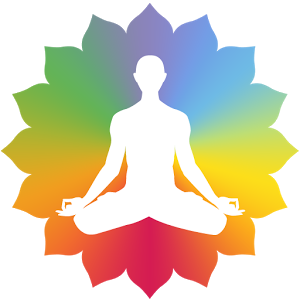
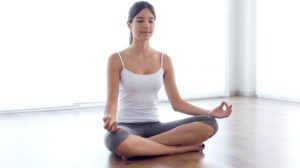 Those people who have heard of the practice of pranayama have been taken from the word ‘prana’ which means ‘life force’ and ‘ima’ which means ‘to be long on or to work on it’. In the words of prana, yoga, the meaning of force within the body is important to the life of the body as well as the functioning of the body. In yogic texts, prana is described as a powerful force which runs through various chakras and nadis in the body to keep healthy, active and new-minded in the body. Breathing plays a very important role in the regulation and maintenance of prana.
Those people who have heard of the practice of pranayama have been taken from the word ‘prana’ which means ‘life force’ and ‘ima’ which means ‘to be long on or to work on it’. In the words of prana, yoga, the meaning of force within the body is important to the life of the body as well as the functioning of the body. In yogic texts, prana is described as a powerful force which runs through various chakras and nadis in the body to keep healthy, active and new-minded in the body. Breathing plays a very important role in the regulation and maintenance of prana.
It is believed that when Prana is not able to go independently in the body – due to obstructions in the cycle or Nadi – a person starts with sickness. The concept of prana and its influence on the well-being of a person have to do more with a person’s mental state, brain and emotional health. The interesting thing is that the way we breathe, it can affect the way we affect things as well as our mental health. Therefore, Pranayam is a simple practice and posture of many breathing techniques which promotes emotional, mental and physical well-being.
The ancient science of yoga taught us the technique of deep breathing “yoga breathing” or “pranayama”. Pranayam gives birth to one’s inner energy and makes it healthy, balanced and active. Honorable Baba Ramdev advised the Pranayama package of seven steps to stay healthy, and stress free. The whole process takes about 45 minutes and the duration can be extended up to two hours. Morning practice is ideal for its practice. Bath and wear loose clothes. sit straight; Keep neck and head straight. The body should be stable and the spinal cord should be straight.
The Seven-Steps Of Pranayama For Daily Practice as described by Honorable Baba Ramdev:
1. Bhastrika Pranayama
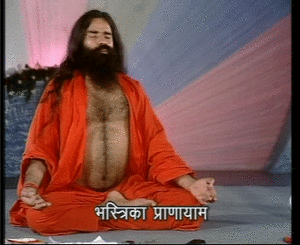 Procedure : Sit in a comfortable Asana. Breathe in through both the nostrils, till the lungs are full and diaphragm is stretched. Then breathe out gently. Take deep breaths and then completely breathe out.
Procedure : Sit in a comfortable Asana. Breathe in through both the nostrils, till the lungs are full and diaphragm is stretched. Then breathe out gently. Take deep breaths and then completely breathe out.2. Kapal Bhati Pranayama
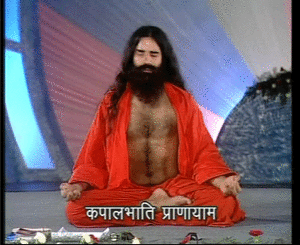 Procedure : Kapalbhati Pranayama consists of short, powerful exhales and passive inhales. Push air forcefully out. Stomach will itself go in.
Procedure : Kapalbhati Pranayama consists of short, powerful exhales and passive inhales. Push air forcefully out. Stomach will itself go in.Benefits : Increases aabha and tej. Helps in obesity, constipation, gastric, acidity, Croesus(liver), hepatitis B, uterus, diabetes, stomach problems, cholesterol, allergic problems, asthma, snoring, concentration, and even cancer and AIDS.
Tips : Heart and High Blood pressure patients , and weak people should do it slowly.
3. Bahaya Pranayama
 Procedure : Breathe air out, touch chin to chest, squeeze stomach completely and hold for a while. then release chin, breathe in slowly. Repeat the process.
Procedure : Breathe air out, touch chin to chest, squeeze stomach completely and hold for a while. then release chin, breathe in slowly. Repeat the process.Duration : Beginners should perform Bahaya Pranayama 3 to 5 times. Advanced practitioners can do 11 repetitions.However, in the winter, advance practitioners can do up to 21 repetitions.
Benefits : Good for hernia, stomach ailments, uterus prolapse and all urinary and prostate problems. Channels the energy of the root lock hernia .
Tips :People with hypertension and heart problem should avoid performing Bahya Pranayama.
4. Anulom Vilom Pranayama
 Procedure : Hold your right nasal with thumb, breathe in from left. Now open right nasal and close left nasal with middle and ring finger and breathe out from right nasal. Now breathe in from right nasal. Now close right nasal and open left and breathe out and in from left nasal. and so on.
Procedure : Hold your right nasal with thumb, breathe in from left. Now open right nasal and close left nasal with middle and ring finger and breathe out from right nasal. Now breathe in from right nasal. Now close right nasal and open left and breathe out and in from left nasal. and so on.Duration : At-least 10 minutes.
Benefits : Heart, high BP, heart blockage, vat-cuf-pit, arthritis, cartilage, bent ligaments, sinual fluid reduced, parkinson, paralysis, neural related, depression, migraine pain, asthma, sinus, allergy.
Tips :Breathe into lungs not to stomach. no organ in stomach absorb oxygen. Do not hurry. Do it slowly.
5. Bharamari Pranayama
Benefits : Concentrating on the center of the eyebrows (ajna chakra) visualize light in the center. Good for sinus problem, hypertension, heart blockage, etc. Vibrations created by humming destroys negative energy, reduces stress/tension, depression, fears and doubts. Feel that your body, mind and soul are radiating with light.
6. Udgeeth Pranayama
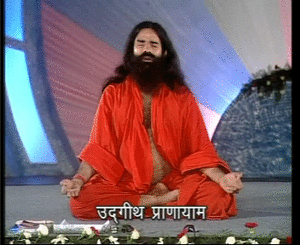 Procedure : Inhalation and exhalation should be long, slow, soft and subtle. Inhale slowly and when ready to exhale, chant Om slowly and steadily. With practice, lengthen each breath to one-minute, that is, to say inhalation and exhalation should total one-minute of time. Visualize the breath entering and moving inside the body.
Procedure : Inhalation and exhalation should be long, slow, soft and subtle. Inhale slowly and when ready to exhale, chant Om slowly and steadily. With practice, lengthen each breath to one-minute, that is, to say inhalation and exhalation should total one-minute of time. Visualize the breath entering and moving inside the body.Duration : 10 minutes.
Benefits : Good for insomnia and for deepening the quality of sleep and relieving bad dreams. Helps the mind to become one-pointed and facilitate the practice of conscious sleep (Yoga Nidra).
7. Pranav Pranayama
Purpose: Spiritual development and to widen your perspective so that you begin to realize the One In All and the All In One – the constant universal vibration AUM/OM, which is found in every single minutest atom
Benefits : meditation.

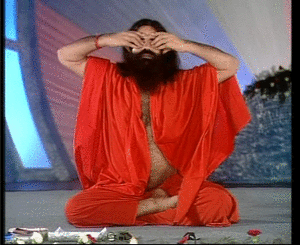
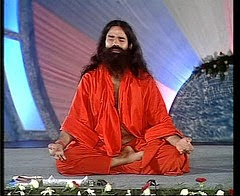
Leave a Reply